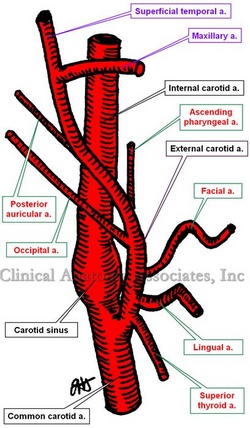|
The term [endarterectomy] is composed by the prefix [end-] (sometimes used as [endo]), meaning "inner" or "internal"; the root term [-arter-], meaning "artery", and the suffix [-ectomy] meaning "removal" or "excision". An endarterectomy is performed to remove atheromatous plaque that is causing arterial stenosis. Although every artery is a candidate for this procedure, carotid endarterectomy is one of the most frequently peripheral vascular procedures performed. The plaque causing arterial stricture can be the origin of thrombi (in situ blood clots), or emboli (loose blood clots that travel with the flood of blood). These emboli can be the cause of cerebral transient ischemic attacks (TIA's). In an endarterectomy the objective is to remove the inner layer of the vessel containing the atheroma. This layer is the tunica intima of the vessel. The problem when performing the procedure is to maintain perfusion of the brain which receives much of its blood supply trough the internal carotid artery. The brain also receives blood through the vertebral arteries and the contralateral internal carotid artery. All these vessels are interconnected at the base of the brain by the arterial circle of Willis, named after Thomas Willis (1621 - 1675) For a YouTube video of the procedure: CLICK HERE (9 minutes)
Images property of: CAA.Inc. Artist: Dr. E. Miranda |
 Right carotid artery system - anterior view Click on the image for a larger version |
| Back to MTD Main Page | Subscribe to MTD |